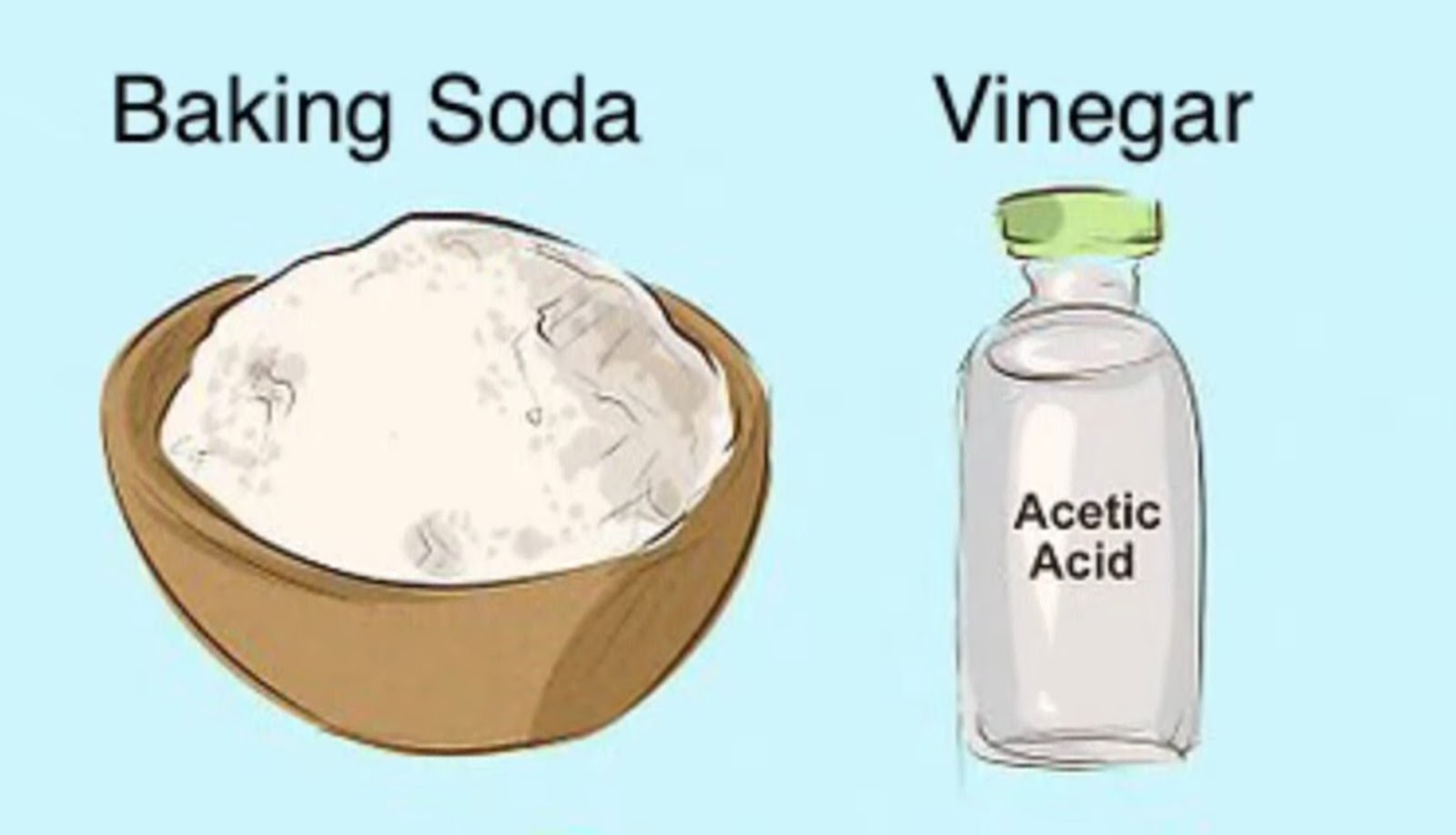The Fascinating Reaction of Baking Soda and Sulfuric Acid

Ever wondered what happens when the ubiquitous kitchen staple baking soda encounters the potent sulfuric acid? This seemingly simple interaction reveals a fascinating glimpse into the world of chemical reactions. The combination of sodium bicarbonate (baking soda) and sulfuric acid produces a notable reaction that is worth exploring.
The reaction between baking soda, chemically known as sodium bicarbonate (NaHCO₃), and sulfuric acid (H₂SO₄) is a classic acid-base reaction. When these two substances come into contact, they undergo a transformation, producing carbon dioxide gas, water, and sodium sulfate. This fizzing, bubbling spectacle is a common demonstration in chemistry classrooms and is also a fundamental principle behind various applications in everyday life.
The history of understanding this reaction is intertwined with the development of modern chemistry. Early chemists recognized the distinct properties of both baking soda and sulfuric acid, paving the way for a deeper understanding of acid-base reactions and the nature of chemical transformations. Sulfuric acid, a strong mineral acid, has been known since ancient times, while baking soda's use dates back centuries, finding applications in cooking, cleaning, and even medicine.
This seemingly simple reaction holds significant importance in various fields. From its use in baking to its role in industrial processes, the interaction between baking soda and sulfuric acid plays a surprisingly important part. Understanding the underlying chemistry enables us to harness its power for various purposes. One crucial aspect of working with these chemicals, particularly sulfuric acid, involves safety. Sulfuric acid is highly corrosive and must be handled with extreme care.
The chemical equation representing the reaction is: 2NaHCO₃ + H₂SO₄ → Na₂SO₄ + 2H₂O + 2CO₂. This equation tells us that two molecules of baking soda react with one molecule of sulfuric acid to produce one molecule of sodium sulfate, two molecules of water, and two molecules of carbon dioxide. The release of carbon dioxide gas is what causes the characteristic fizzing and bubbling observed during the reaction.
While generating carbon dioxide might be the most obvious outcome, it's not the only effect. The production of sodium sulfate, a common ingredient in detergents and other household products, is also a notable result. This illustrates how a chemical reaction can transform common substances into useful compounds.
Advantages and Disadvantages
| Advantages | Disadvantages |
|---|---|
| Neutralization of acid spills (in controlled settings) | Highly exothermic reaction (generates significant heat) |
| Production of useful byproducts (sodium sulfate) | Risk of burns from sulfuric acid |
Frequently Asked Questions:
1. Is this reaction dangerous? Handling sulfuric acid can be dangerous due to its corrosive nature. Always wear appropriate safety gear and work in a well-ventilated area.
2. Can I perform this reaction at home? It's not recommended to perform this reaction without proper safety precautions and knowledge of chemical handling.
3. What are the practical applications of this reaction? This reaction is used in some industrial processes and can be demonstrated in educational settings to illustrate acid-base reactions.
4. What causes the fizzing? The fizzing is caused by the release of carbon dioxide gas.
5. What happens if I touch sulfuric acid? Sulfuric acid can cause severe burns. Seek immediate medical attention if you come into contact with it.
6. Can I use other acids with baking soda? Yes, baking soda reacts with other acids, although the reactions may vary.
7. What is the role of water in the reaction? Water is a product of the reaction.
8. How can I safely dispose of the products of the reaction? Consult local regulations for proper chemical waste disposal.
Tips and tricks: Always add the acid to the baking soda slowly to control the reaction rate. Never add baking soda to a large quantity of acid, as this can lead to a rapid, potentially dangerous reaction.
In conclusion, the reaction between baking soda and sulfuric acid provides a compelling example of a fundamental chemical process. Understanding the equation, the products formed, and the safety precautions involved are crucial. While this reaction can be harnessed for various applications, it's essential to approach it with respect and caution. This reaction serves as a reminder of the power of chemistry and the importance of responsible experimentation and application. As we continue to explore the fascinating world of chemical interactions, the reaction of baking soda and sulfuric acid stands as a classic example of the transformations that occur around us every day, highlighting the importance of understanding the building blocks of our world. By continuing to learn about these fundamental principles, we can unlock new possibilities and contribute to advancements in science and technology.
Cumberland county nc arrests making headlines
Unlocking serenity with benjamin moore natural linen paint
Mastering the light cahill nymph a fly tying guide








+on+the+floor.+The+sulfuric+acid+in+a+car+battery+is+approximately+6+M.+Baking+soda+or+sodium+bicarbonate+(NaHCO3)+can+be+used+to+neutralize+the+acid+spill.+If+the+mechanic+has+a+3+M+solution+of+baking+soda%2C+what+volume+is+required+to+neutralize+the+acid+(Do+not+use+a+calculator).jpg)




